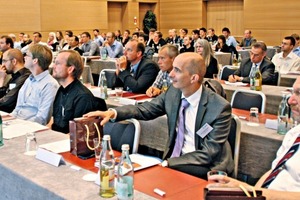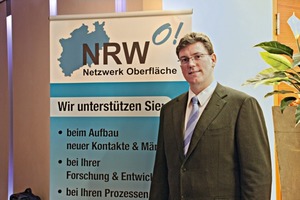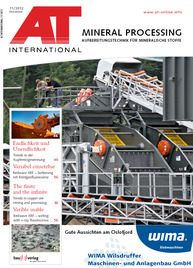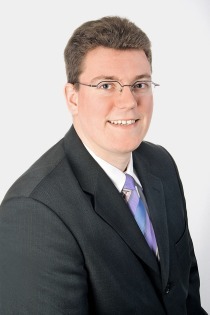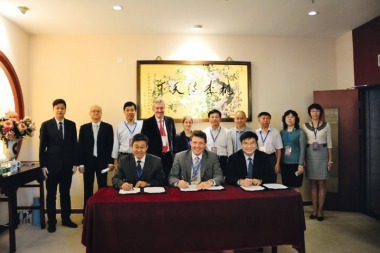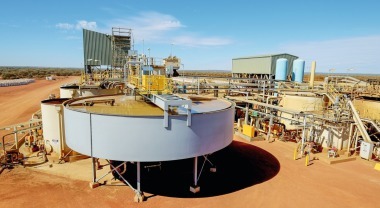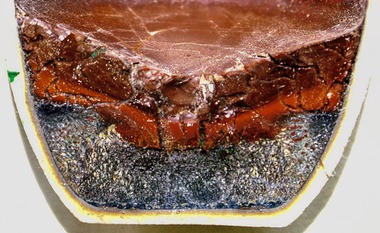Science meets business
About 125 international representatives from business and science took up the invitation of Technologieförderung Münster GmbH and the Netzwerk Oberfläche NRW to attend a two-day conference to discuss developments in the availability of rare earth elements and compounds as well as potential optical and magnetic applications and the resulting economic aspects (Fig. 1). The range of topics in the technical applications spanned from crystal growing for laser systems through markers for explosives, plagiarism protection, nano-bioanalytics as well as luminescent materials for new lighting concepts to magnetic cores for generators in wind power plants.
Rare earths and their compounds are used in many key technologies. Thanks to their unique optical, chemical and magnetic properties, they are found as core components in a wide range of high-tech products and are therefore some of the most sought-after raw materials in the world. A large percentage, namely 25 %, of the rare earth elements produced are used in catalytic converters in the refining of crude oil and in cars for improved oxidation of pollutants. Around 20 % are used in the glass and ceramics industry as glass polishers, decolourants, and UV absorbers as well as in optical lenses and glasses. For power supply to portable, electronic devices like, for example, laptops and mobile phones, rare earths are used in nickel-hybrid batteries. Another application currently accounting for around 25 % is the production of permanent magnets, e.g. made of samarium-cobalt for military and aerospace applications or made of neodymium-iron-boron compound for starter motors for cars and generators of wind and hydropower plants, in medical magnetic resonance equipment or in stereo equipment. And not least, rare earths are also used for doping luminescent materials in the lighting and display screen industry.
The ever rising demand for rare earths is leading to mounting concern about the availability of these elements. Production, processing and supply of rare earth products will lead to an imbalance in the fragile relationship between supply and demand for these raw materials. As the most important supplier, China dominates in the production of rare earths, accounting for more than 90 % of the current global production, and is already making for an artificial shortage of the products for consumers outside China. Against this background, the dependable supply of rare earths is one of the central challenges of the future. One important issue will therefore be the reduction of the consumption of rare earths based on innovative technologies. One solution could also be for companies to develop other raw material sources or resort to alternative or secondary (waste-derived) resources. German industry, for example, is opting to recycle valuable raw materials from waste electric and electronic equipment or for the recycling of phosphor-containing rare earths from old lamps. Luminescence powders are therefore one of the sources for rare earths, and many other magnetic and superconductive pigments are equally suitable for recycling.
The conference, which brought together international experts from a wide array of disciplines, was organized by Netzwerk Oberfläche NRW together with Technologieförderung Münster GmbH. Straight after the conference Ulrike Mehl, editor of AT INTERNATIONAL and Martin Gründkemeyer (Fig. 2), Regional Office Manager for Netzwerk Oberfläche NRW, met for an interview covering the expectations and results of the conference.
Martin Gründkemeyer: Goal of Netzwerk Oberfläche NRW as the regional office of Technologieförderung Münster GmbH is to initiate innovation. Another aspect is classical technology transfer from universities into companies. Moreover we act as a contact point, bringing companies together with the appropriate universities and service providers, enabling them to work together to devise solutions for specific technical problems. Besides the Westfälische Wilhelms University of Münster (WWU) and Münster University of Applied Sciences (FH Münster), over 70 companies are linked with our network based on loose cooperation contracts and actively take part in this network. In the network, numerous cooperative projects have already been initiated. In the field of „Rare Earths“, three grant proposals have already been approved.
Within the framework of such cooperation projects, we have established that in the development of new technologies the use of rare earths is not only becoming more frequent, but also increasingly important. Many of these technologies and products do not function at all without these raw materials with their typical chemical and physical properties. Rare earths are therefore a key issue. That was recognized by colleagues both at the WWU and the FH Münster and therefore it was only a short time from the initial idea of organizing a technical conference to the actual event – just under five months.
Martin Gründkemeyer: There are conferences on this subject with a very scientific bias or that are heavily concerned with the financial and economic aspects. Our approach therefore goes more in the direction of application. Over a third of the attendees come from industry. The programme of papers over the two days is rooted strongly in practical application. In addition we have endeavoured to and, I think, succeeded in bringing together people from industry and research to, for example, facilitate new urban mining projects and reduce the supply dependence on rare earth mining countries.
In addition, we have a total of 37 poster presentations. We were able to enlist the support of many young scientists who are taking the opportunity to get into contact with the industry and to present their work and research projects. These include many extremely exciting topics that will certainly be relevant in one way or another with regard to future industrial development.
Martin Gründkemeyer: Interest in the subject is undiminished. There are numerous companies in the region for which rare earths are essential raw materials, which are also very important in certain departments both at the WWU and at the FH Münster – especially in the field of optical and magnetic applications. Münster will therefore in any case remain the venue for the event and the date for the 2nd REEC has already been set for 10.-12.09.2013.
Martin Gründkemeyer: Basically, rare earths are distributed relatively evenly in the earth’s crust all over the world and therefore actually available everywhere. The main problem is in opening up and operating commercially viable mines. But the higher the price rises, the more probable it is that it will in future be worth resuming operation at already disused mines or to start new projects.
Otherwise, the recycling of rare earths will also gain importance. Urban mining, that is the recycling of waste electric and electronic equipment, of mobile phones, etc., will increase considerably. Actually, already today enough RE is contained in our technical products to enable self sufficiency. However, the technology is not so far advanced that recycled rare earth elements can match the quality of primary mined products. Here, however, research will continue to work on solution strategies in the years to come – also with regard to rising requirements for the environmental compatibility of the recycling processes. Besides various poster presentations, two papers also address urban mining (Prof. Dr. Koen Binnemans, Leuven: Recycling of rare earths – challenges and opportunities; Dr. Stefan Pirker, Treibacher Industrie AG, Althofen: Rare Earth – Critical resources for the industrialized world).
In any case, there will be more and more products and applications that cannot manage without rare earths. Another solution strategy can be the search for alternative materials. Research projects to this end are already underway.
Martin Gründkemeyer: Networking was a very important goal of this conference. At the conference, scientists and users have met who did not know each other previously. They have got talking to each other and taken the opportunity to develop new ideas and even initiate new cooperation partnerships.
Moreover we want to make consumers more aware of rare earths as raw materials and the issue of availability and applications, and not least anchor them more firmly in education and training. Therefore it was a great concern of ours to make visible the importance of this vigorously growing branch of industry.
www.reec-conference.eu

